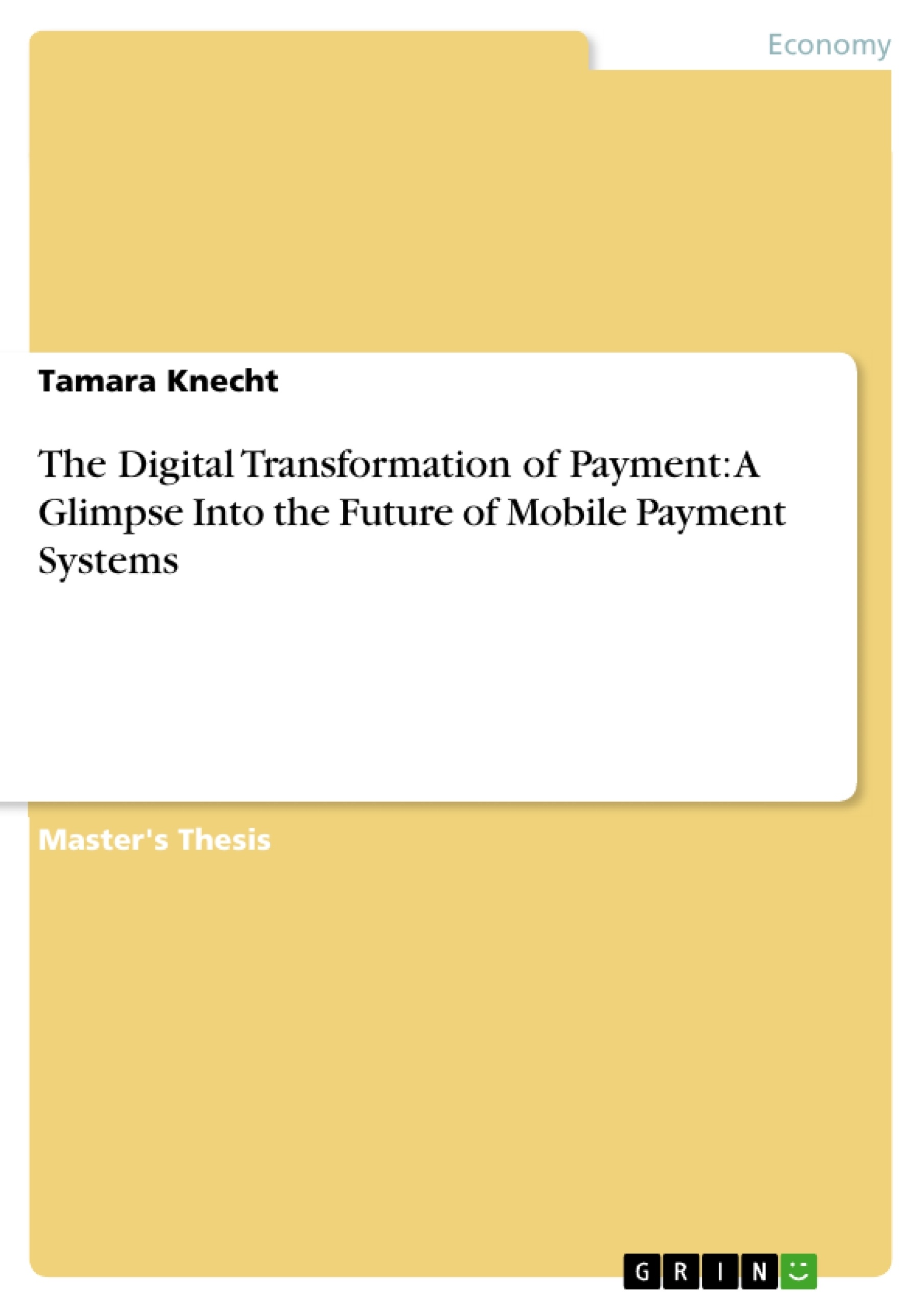Mobile payment systems are an innovation that allows people to make contactless payments with a mobile device (such as a smartphone) at the cash register in brick-and-mortar retail outlets without carrying a wallet with credit and debit cards. While other countries have almost entirely adopted and integrated this innovation into their daily lives, adoption rates in Germany remain significantly low. Hence, the objective of this work is to analyze the future of mobile payment systems in Germany with respect to the reasons for adoption or refusal. In particular, the following research question was addressed: Will mobile payment methods replace physical cards in Germany, or will certain factors prevent full adoption?
Inhaltsverzeichnis (Table of Contents)
- Introduction
- Problem definition and research question
- Terminology: mobile payment systems
- Approach and limitations
- Theoretical framework payment systems
- Historical perspective on the payment industry
- Technologies enabling mobile payment
- Mobile payment system processes
- Global adoption of mobile payment
- Germany
- China
- India
- United States
- Security and safety aspects of mobile payments
- Influential factors for the successful implementation of mobile payment innovations
- Product analysis
- Market analysis
- PESTEL analysis
- Competitor analysis
- Customer analysis
- Scientific approaches to the adoption of innovations
- Adoption depending on the type of innovation
- Disruptive innovation
- Sustaining innovations
- Diffusion of innovation theory
- Unified theory of acceptance and use of technology
- Pace of substitution model
- Adoption depending on the type of innovation
- Empirical investigation
- Research methodology
- Conceptualization of the questionnaire
- Data protection measures
- Statistical evaluation of the survey results
- Hypotheses testing
- Discussion
Zielsetzung und Themenschwerpunkte (Objectives and Key Themes)
This thesis examines the future of mobile payment systems in Germany, specifically analyzing reasons for adoption or refusal. The research addresses the question of whether mobile payment methods will replace physical cards in Germany or if specific factors will prevent full adoption.
- Historical development of payment systems and its impact on current adoption
- Technological underpinnings of mobile payment systems and their limitations
- Cultural and socio-structural factors influencing mobile payment adoption in Germany
- Scientific models explaining adoption of innovations, particularly mobile payments
- Empirical investigation of mobile payment usage and non-usage in Germany
Zusammenfassung der Kapitel (Chapter Summaries)
Chapter two provides a theoretical foundation by exploring the historical evolution of payment methods, highlighting the gradual transition to new forms driven by perceived advantages. It then delves into the technologies and processes underlying mobile payment systems, including a comparative analysis of adoption rates in Germany, China, India, and the United States. Finally, the chapter examines the security and safety aspects of mobile payments.
Chapter three analyzes factors influencing the successful implementation of mobile payment systems in Germany. It examines the product itself through a SWOT analysis, the German market through PESTEL and competitor analyses, and the German customer through Hofstede’s six dimensions of culture model.
Chapter four explores scientific approaches to understanding the adoption of mobile payment in Germany. It categorizes mobile payments as sustaining innovations and analyzes adoption rates in Germany using diffusion of innovation theory and the UTAUT model. Finally, it utilizes the pace of substitution model to evaluate the broader ecosystem and the potential transition from physical payment cards to mobile payment systems.
Schlüsselwörter (Keywords)
The primary keywords and focus topics of this thesis are mobile payment systems, adoption, Germany, innovation, disruptive innovation, sustaining innovation, diffusion of innovation, UTAUT model, pace of substitution, security, and cultural factors.
- Citar trabajo
- Tamara Knecht (Autor), 2021, The Digital Transformation of Payment: A Glimpse Into the Future of Mobile Payment Systems, Múnich, GRIN Verlag, https://www.grin.com/document/1297113



